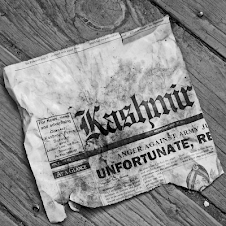Kashmir is divided into three different provinces namely Jammu, Kashmir and Ladakh and each province unique in its nature while differing from each other in landscape, weather and culture. While having suffered the violent conflict for more than two decades it is put through the tragedy of the Darbar move, every year. Every six months the Secretariat, High court and Government offices shift from winter capital (Jammu) to summer capital (Srinagar) and vice-versa, wasting time, resources and energy. But that’s not what I want to talk about in this column. Having spent some time in Jammu across the seasons, I have realised that Jammu looks like Kashmir in winters.
If one comes to Jammu in summers, while crossing the Jawahar tunnel he begins to see the change and by the time he arrives in Jammu, he finds himself in a different world altogether. One that it is extremely hot and dusty in summers and that there are a lot of cultural differences among the people of these two provinces of the same state. But, in winters Jammu is more like Kashmir.
Anywhere and everywhere you go, you find Kashmiri people. Walking across the famous residency road, eating out at Pahalwan Sweets, McDonalds, KFC and many other eat out places including those specialised in Kashmiri Wazwan and pure vegetarian food. You find them shopping all around the posh Gandhi Nagar’s Gole Market and in the Traffic Jams around the city. And the Kashmiri Bakery shops open up everywhere in the winters and keep brewing with customers.
While the weekend culture has sneaked into the life style of Jammu residents, Kashmiri’s once in Jammu follow the suit. Eating out and watching late night Bollywood movies in theatres becomes a part of life. Both the cultures begin to come together into each other all through the winters. And this merger somehow makes one believe in the unique but the binding forces of the state. It is a win-win situation for people from both provinces. Getaway destination for Kashmiri’s from the chilling cold and market upsurge for the Jammu’ites.
But then that’s not the all of story. The situation is quite complex. There have been differences between the people of Kashmir and Jammu which has had the potential of destroying the very fabric of the society. There is a strong feeling among the people of Jammu that Kashmir has been given extraordinary treatment all through the 60 years, while in Kashmir the people feel development work was shifted to Jammu, while the Kashmir suffered the conflict for more than two decades. There have been agitations against each other like the one which happened over Central University. And there have been instances where the communal harmony which has been maintained all through these tough times was at the verge of extinction.
Both the provinces have been accusing each other of numerous biases and special treatments in the areas of Politics, education, electricity, development and what not. This tension has been growing in both the provinces and is being watered by the hate mongers. But, never have any serious steps been taken to address this issue, to bridge the gap among people. Politicians flare up these issues during elections to gain votes without realising the consequences it would lead the state to. And the double speak has become part of their campaign and changing stances and ideologies while travelling from one province to other a part of their life.
It’s very necessary that people realise the value of togetherness in social, economic and political characteristic of the state for lasting harmony and peace.






